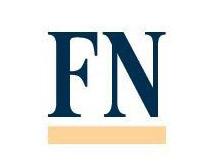
Industry needs to improve trade reporting
Real-time pricing and intraday liquidity are two of the most obvious differences between exchange-traded funds with their mutual cousins.
But in examining the equity like characteristics of ETFs, a significant difference with equity instruments is that there is no requirement to report ETF trades nor is there a consolidated tape.
Unlike ETFs, traditional mutual funds are only priced once a day. As with ordinary equity shares, investors have the ability to invest in ETFs at any time during the trading day, which is a significant benefit over mutual funds, especially in volatile environments when markets can experience significant intraday movements.
However, because ETF trades in Europe do not have to be reported under the markets in financial instruments directive, investors cannot measure the total volume of shares traded in any ETF listed in Europe on any day. It is estimated only about 30% of all ETF trades in Europe are reported.
Investors would benefit from more reporting to the exchange. It would increase price formation transparency, which will have a knock-on effect on exchange spreads and order-book depth. This would in turn result in more transactions taking place on exchange.
Some steps have already been made in the right direction.
The London Stock Exchange and Swiss Stock Exchange already require all trades of ETFs to be reported, but they are the only exchanges in Europe to do so and 70% of ETF trades are over the counter and are often not reported.
The visible volumes, therefore, only represent the tip of the iceberg and not the true liquidity of the market as viewed against the liquidity of the underlying constituents.
Conversely, at times, ETF trades are reported twice – once at the creation or redemption of new units and again when the corresponding secondary market trade is reported. If all trades were reported in this way it would imply a greater than actual liquidity.
It therefore appears logical that only the secondary market trade should be reported in the case of a creation or redemption.
Fragmented data
Another challenge to accurately calculating ETF trading volumes trade is fragmentation: the same ETF can be listed and cross-listed on 21 exchanges in Europe, and there no mechanism to consolidate or aggregate data across all exchanges.
Mifid II, which is set to be implemented in 2014, will likely require all European ETF trades to be reported and there is likely to be a consolidated tape, combining trades on the 21 exchanges in Europe where ETFs are listed and cross-listed.
ETFs, which have always been one of the most transparent types of funds, have continued to lead the charge in offering transparency on swap collateral and securities lending activity while other Ucits funds remain opaque in their use of the same practices.
In any considered analysis of ETF liquidity, it is the primary market liquidity that is key and investors take comfort in the diligence of providers to ensure the fund will have capacity to absorb a significant growth in its assets under management – even more critical in the less liquid fixed income markets.
Of course, liquidity concerns are not the sole preserve of the provider and investors will look to the spread and depth of the order book on the secondary market before being comfortable that they are purchasing a truly liquid instrument.
There are some solutions that could be implemented now to help improve the limited transparency and consistency in ETF trading information in Europe. Investors can and should ask their brokers to report all ETF trades at the time of the trade.
ETF providers should amend their agreements with their marketmakers and authorised participants to require them to report all trades at the time of the trade.
A set of guidelines should be adopted by the ETF industry in which trades should be reported at the time of the trade, especially when creations and redemption are being done to facilitate a client/secondary market trade to eliminate the potential for double counting of some trades.
Regulators could provide guidance to support these changes being made now rather than waiting for Mifid II to be implemented.
